Marine AC units reject the heat from the boat to seawater and this seawater is a source of sorrow and heartache in the muddy waters of Florida as strainers and lines plug up rapidly needing regular cleaning. In addition there is the condensation that they produce to be dealt with. In Florida we have found that this adds up to about 10-15 litres of water a day. Originally, when the AC units were installed the condensation drained to bilge which would be pumped overboard by the bilge pump. This worked great until the bilge pump was pirated to replace a shower pump that had shorted out and a different style pump was installed. For you non-boaters the bilge is the lowest point in a boat where all leaks should end up eventually. Traditionally shaped boats would have a bilge that can hold large amounts of water, modern flat bottom sail boats like Viatori has a ludicrously small bilge which only holds about 2 litres of water.
Mermaid Venturi’s were installed which if there is sufficient seawater flow will suck the condensation into the seawater line and out of the boat. When the lines were new and clean this worked but as the lines got a little dirty the flow reduced to the point were the venturi’s wouldn’t suck anymore. Cleaning the lines didn’t get the flow high enough so a larger seawater pump was installed to increase the flow.
Then Richard bought the boat.
When we started the AC, the forward AC unit flooded the boat with condensation the first day. We discovered this quickly and started to use a drill pump twice a day to empty the condensate pan under the AC unit. This required tearing up the salon to get to the AC unit and was a big pain in the ass. For about a month the aft AC unit continued to self drain the condensate via the venturi until a check valve on the venturi line got stuck. The check valve is there to prevent seawater from flowing into the boat if the venturi stops sucking. We removed the check valve and continued on our merry way.
Eventually the flow to the aft AC slowed down enough and we found seawater in the bilge. This was traced to the aft AC unit whose condensation pan was overflowing seawater from water back flowing from the venturi line. The removal of the check valve on the venturi bought a month of extra venturi function but it allowed the seawater to flow into the boat once the venturi stopped working – a poor solution. The water was cleaned up and the original line from the condensation pan to the bilge was connected. We ran this to a bucket which we emptied everyday.
A new line was run from the forward AC unit to the bucket so that no more drill pumping would be needed. Running the new line was a painful as we had to remove the table to get access to the areas where the line would run.
Next the lines were connected to a shower sump which on some boats is used to collect grey water and pump it overboard. The new shower sump was glued to the bottom of the boat and another line run from the shower sump pump to the kitchen sink in a similar fashion as the dishwasher is connected to the kitchen sink in a house. The one difference is a syphon breaker is installed which prevents syphoning of the ocean back into the boat when the boat is heeled.
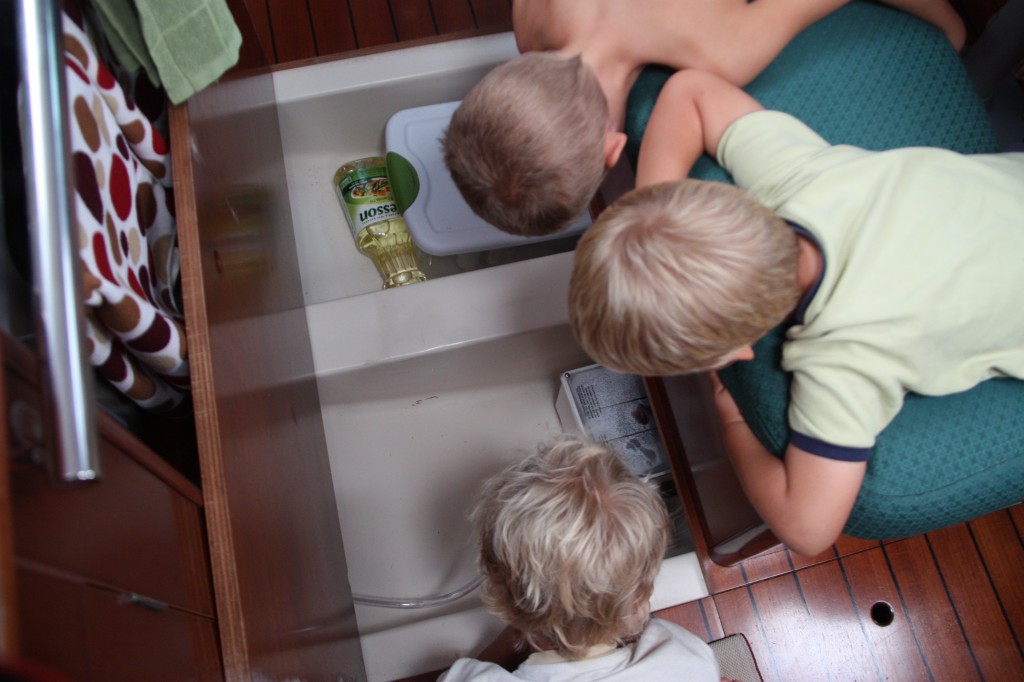
The boys checking out the shower sump installation. Notice the perfectly straight alignment of the sump.
So now after 60 drill pumpings, one drill pump, 20 bucket emptyings, two floods, one fresh and one salt water, 70 salon disassemblies, 5 trips to Home Depot or West Marine, 10 hours of tool time and $200 the air conditioning condensation is pumped overboard automatically without need for human intervention – right now.
The bilge pump as currently installed is only an emergency flooding pump and does need to be improved so that small leaks don’t fill the boat before the pump activates. Thankfully Viatori is a dry boat meaning it has no leaks except when something is wrong so this is on the “to do” list instead of the “must do now” list.
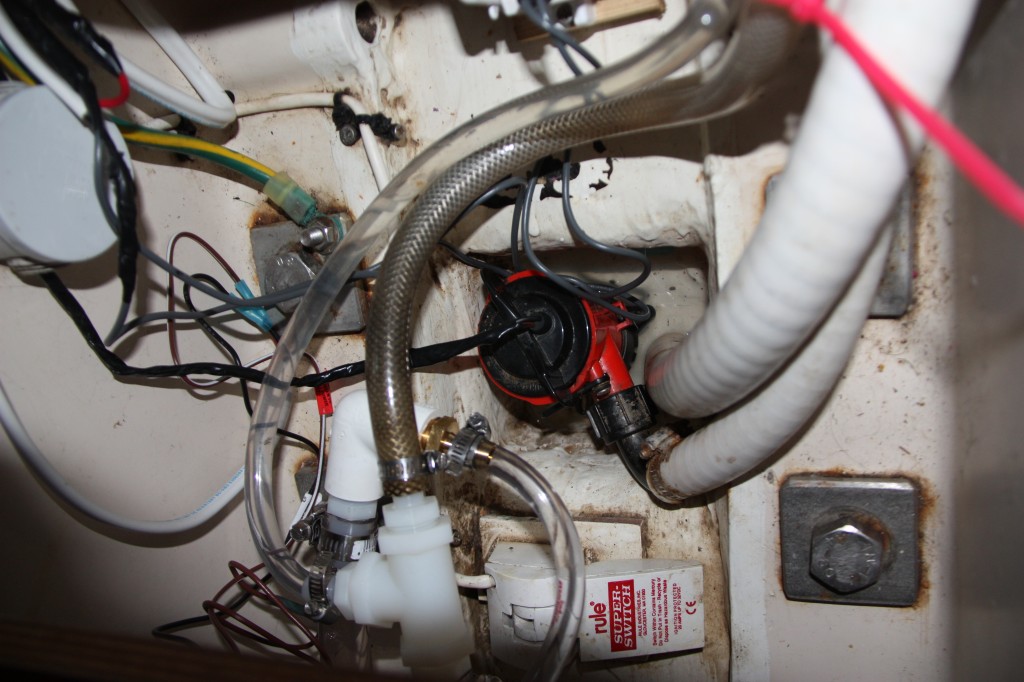
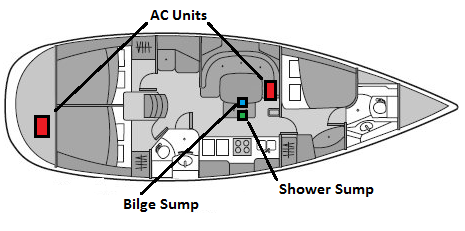
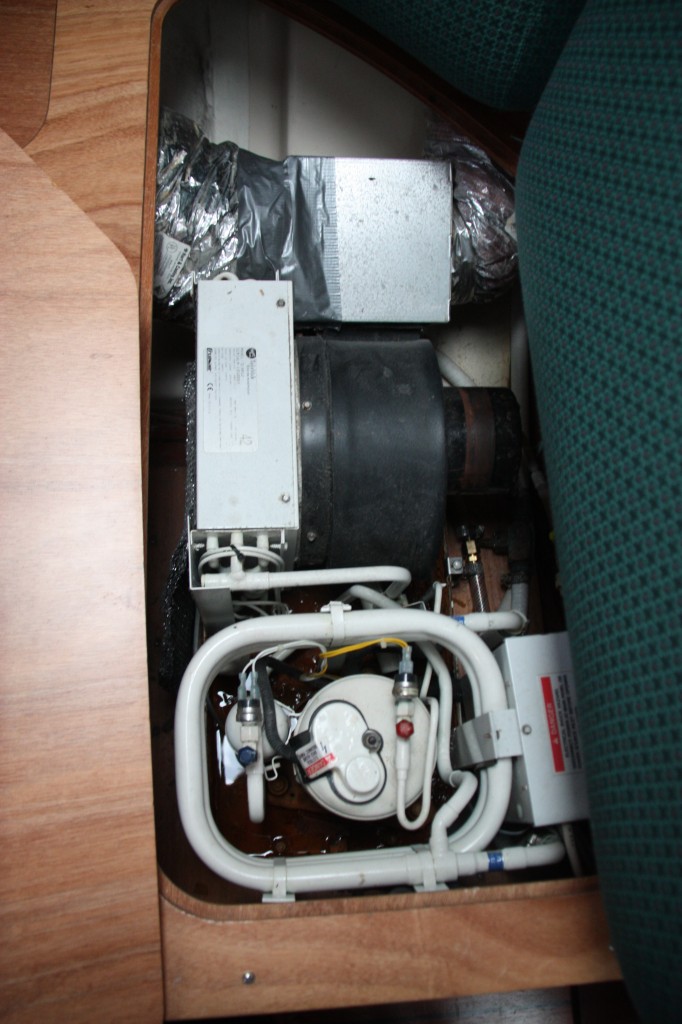
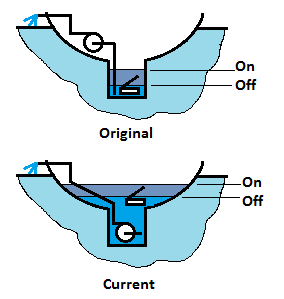
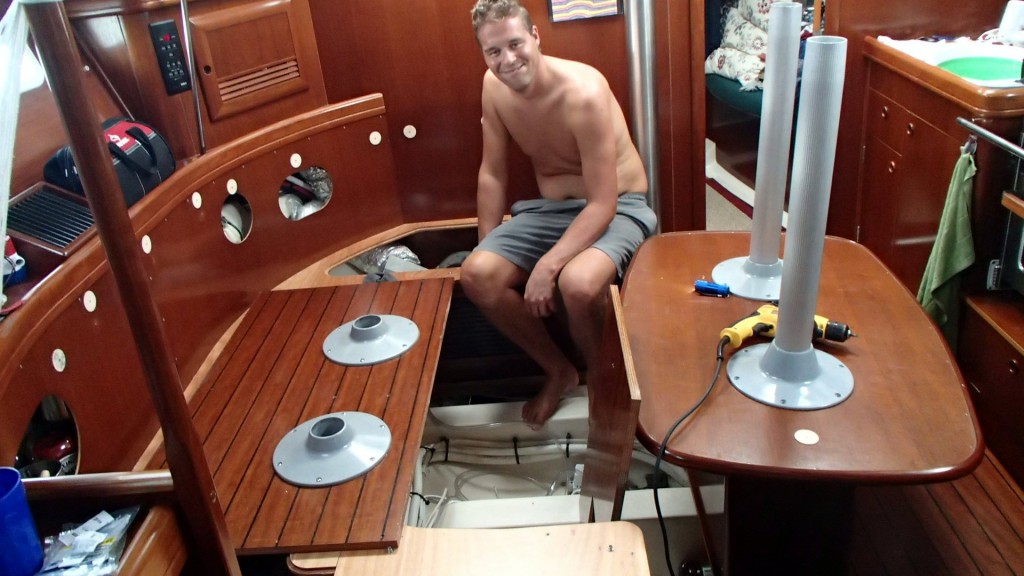
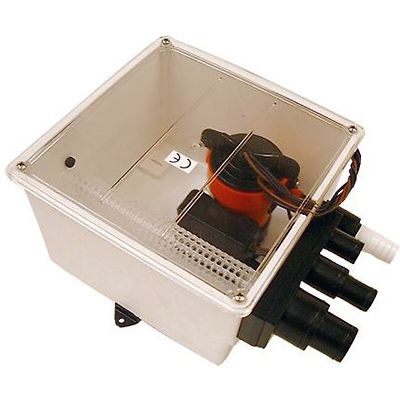
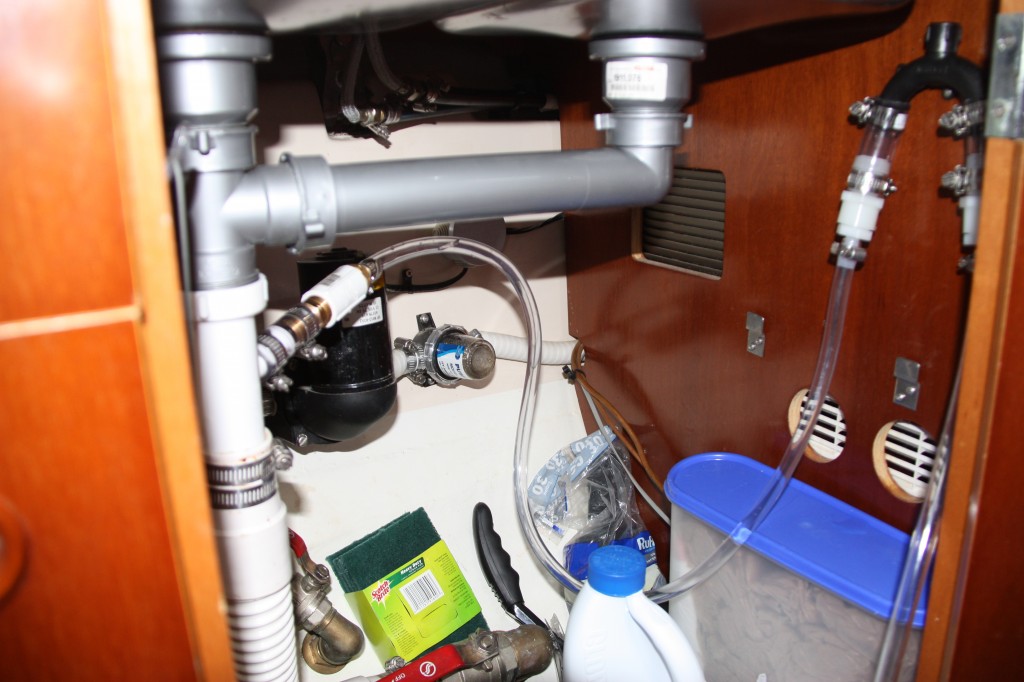

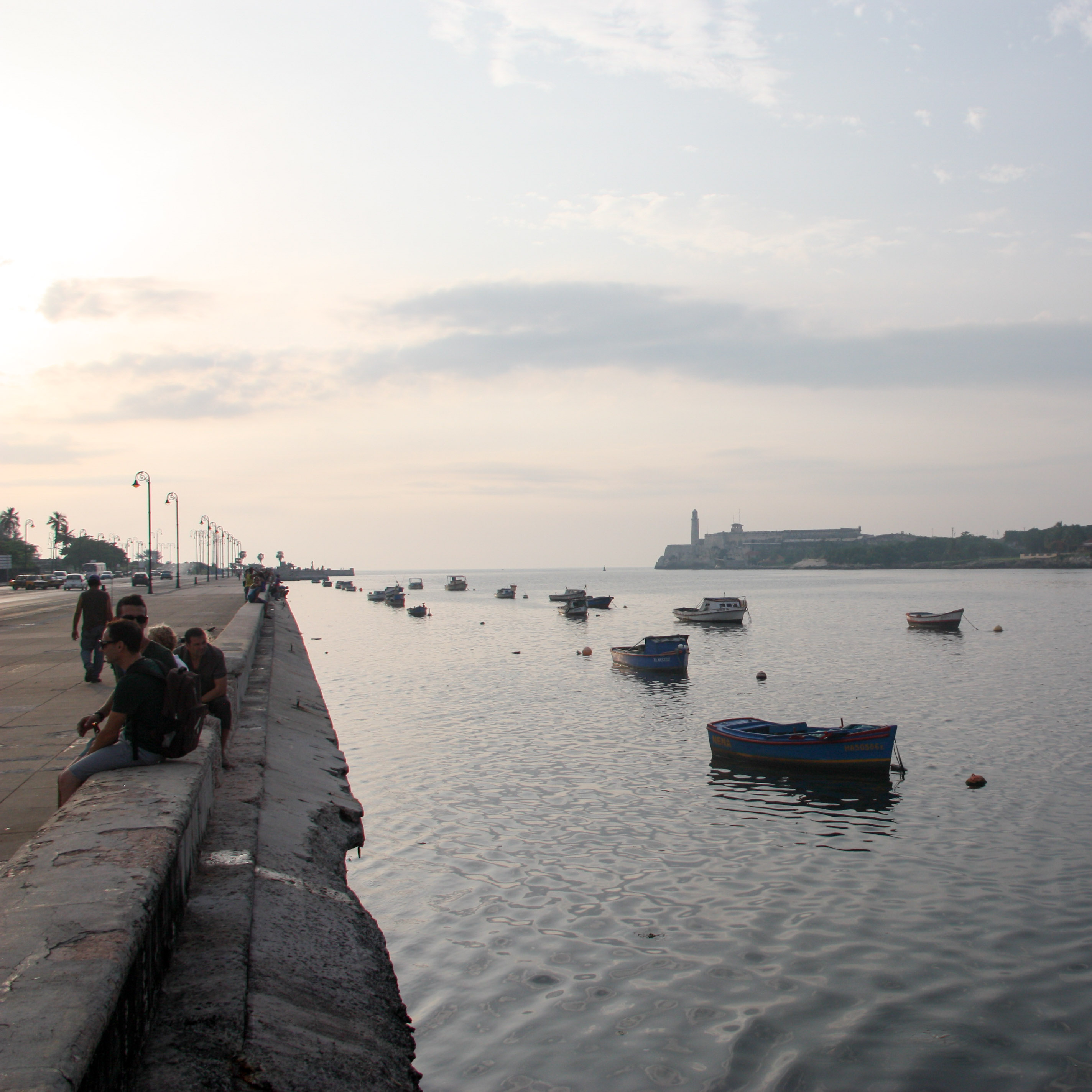
YEAH -you did it – all of you!!! Perseverance at it’s best. Good job crew!
coodoos to all the crew!!